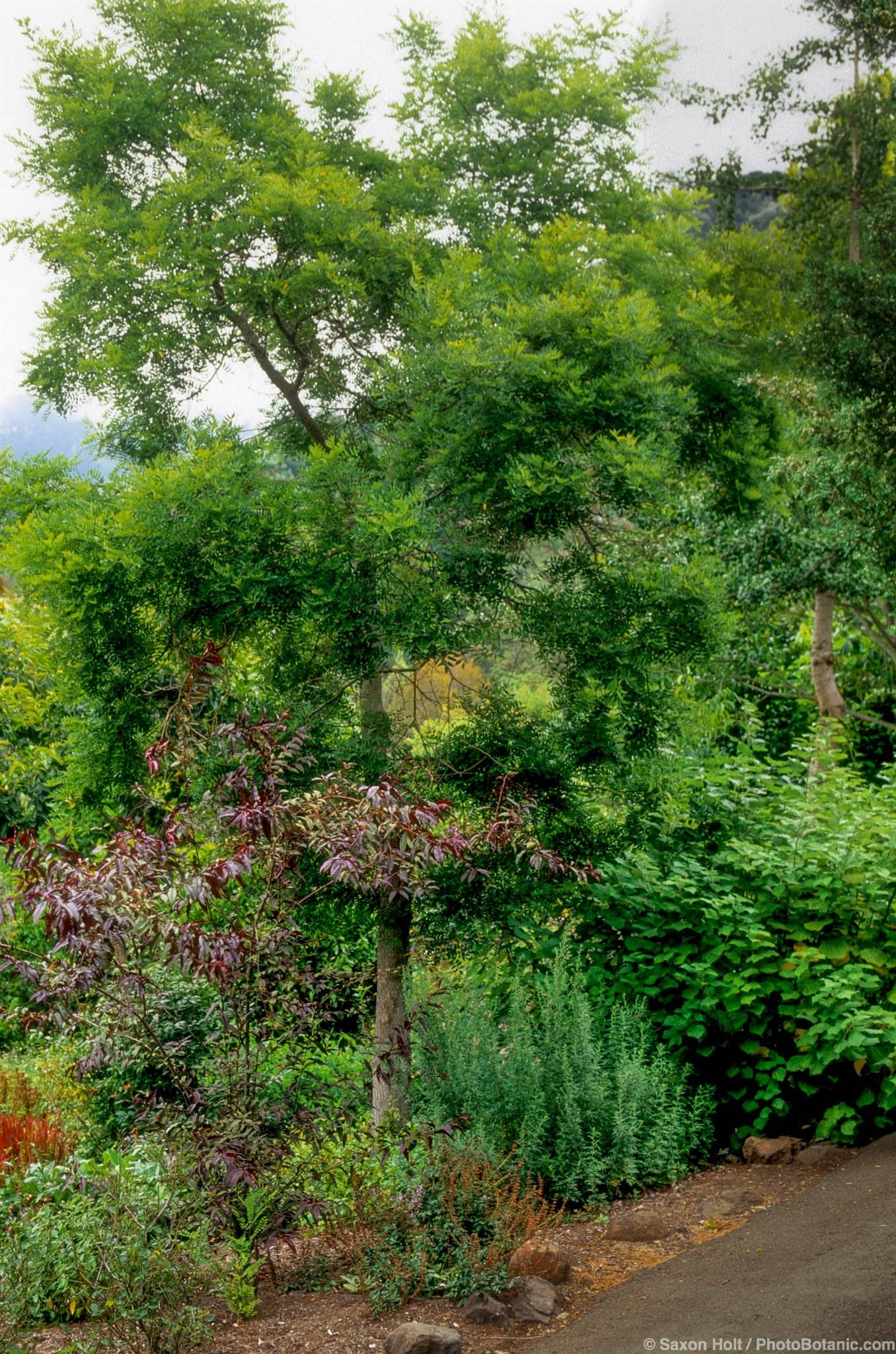Styphnolobium japonicum (aka. Sophora japonica) Japanese Pagoda Tree - in drought tolerant garden

Styphnolobium japonicum
Japanese pagoda tree
Native to China and Korea, Japanese pagoda trees thrive in well-drained soil and full sun to partial shade. These drought tolerant trees require minimal water once established, making them ideal for Mediterranean climates. Japanese pagoda trees are known for their fragrant white flowers that bloom in late summer, attracting pollinators such as bees and butterflies.
Ideal for providing shade in the garden, Japanese pagoda trees are also popular for their ornamental qualities. The unique structure of their branches and leaves make them a standout feature in any landscape. For those gardening in summer-dry climates, Japanese pagoda trees are a low-maintenance and visually appealing option to consider.

